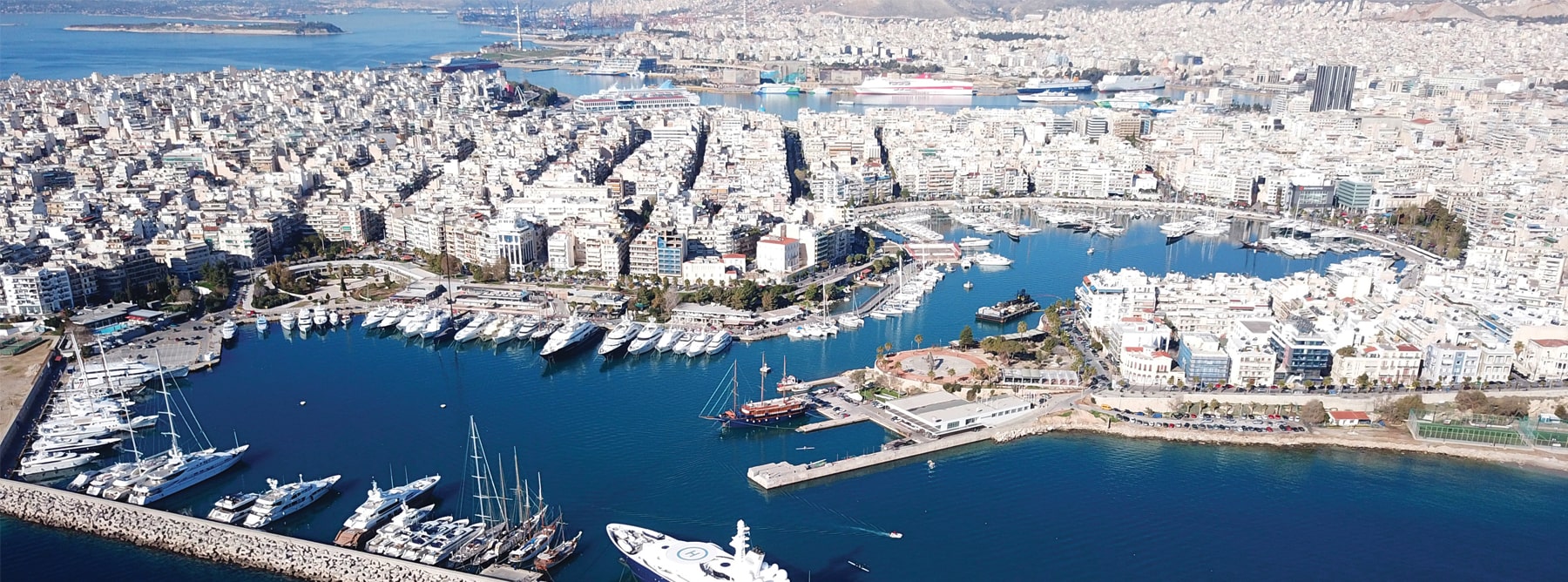Cities are hubs for the exchange of goods, services, knowledge, and ideas, and nowadays, they are growing at unprecedented rates. With an increasing number of inhabitants comes a demand for solutions to problems arising from urban life. One of these problems is insecurity related to crime and violence. It challenges the image of a city as a stage for positive interaction, rather depicting it as chaotic and dangerous. How can cities respond to this seemingly prevalent malaise?
Moreover, why are city-level actions important to combat insecurity?
Dear reader:
This is the first of a series of articles where we will discuss some of the many aspects covered by the BeSecure FeelSecure project undertaken by the city of Piraeus. We will discuss the goals, challenges, milestones, lessons learned, and key topics of this project. We hope these articles will contribute to the current discussions on how urban actors can participate in the prevention of insecurity in urban environments.
The 19th century was a century of empires, the 20th century was a century of nation states.
Wellington E. Webb, Former Mayor of Denver
Current approaches to reducing insecurity in cities
Since the mid-19th century, cities have been the subject of a myriad of studies and experiments to explore how they relate to insecurity, from crime to victimization and feelings of insecurity. Ever since, the city is observed as a source of information about crime. From the late 1960s on, there has been an interest to transform the city in order to tackle violence and crime. There has been a continuous effort from local elected officials, representatives of municipalities, researchers, and urban planners to integrate crime prevention into urban design, as we can see with the development of Crime Prevention Through Environmental Design (CPTED) methodology, among others.
Insecurity and perception of insecurity are multifaceted phenomena. With time, we have come to understand that problems of security require us to think about more than walls and police. Within this scope, cities have an important role to play.
 Tackling insecurity at a city level helps policy makers and urban planners understand the everyday experience and how to improve it. Tackling insecurity at a city level helps policy makers and urban planners understand the everyday experience and how to improve it.Image source: isglobal.org |
When proposing solutions, generalizations are tempting: a statement or conclusion that gives us the right direction that everybody must follow. However, cities are very heterogeneous and, as research has shown over time, insecurity and territory are related. An assessment of different factors is necessary to create focused strategies, such as the identification of security issues in a specific territory and how they are perceived, as well as environmental and social aspects. For this, we must observe and understand the smaller universes within the city: neighborhoods. At a city level, phenomena in different neighborhoods can be disaggregated and analyzed to propose focused strategies. This kind of characterization is important: solutions are not universal -what applies to one neighborhood may not apply on another one.
There are of course public policies at international, national, and regional levels to help combat violence and insecurity. However, a perspective from the city level is paramount to gauge the effectiveness of these strategies in terms of the actual experiences of citizens.
As the local level is the level closest to the citizens, it is equally the most pertinent when it comes to finding solutions to the citizens’ security-related problems. Hence, the city level can articulate the macro level public policy and the micro level experience of everyday urban life of citizens. It is through this level that custom-made solutions can be created, implemented, and evaluated.
Another recent development in crime prevention strategies has been the increasing awareness of the role of citizens. On the one hand, citizens have empiric knowledge and experience of their environment that frequently does not make it to the statistical data of criminal incidence. On the other hand, effective initiatives for crime prevention are those where citizens are heard, empowered, and perceive that their participation matters. Furthermore, these kinds of initiatives integrate aspects that are not in the domain of the police – such as culture and access to education – and tackle the root of security problems, such as socio-economic inequalities.
To improve security in cities an interdisciplinary and multileveled approach is necessary.
The BSFS project
With the above-mentioned elements in mind, the city of Piraeus aims to introduce new approaches on the participatory model of crime prevention and mitigating of perceived insecurity. Collaboration of the urban authority with citizens and urban security stakeholders will be fostered via social and spatial interventions as well as novel technological tools that will be implemented in the frame of the Be Secure – Feel Secure project.
 Port of Piraeus. Port of Piraeus.Image source: greeceinvestorguide.com |
Piraeus is one of the highest populated cities in Greece, and also the largest and busiest port in the country. The main urban threats are small scale crimes that negatively impact the everyday life of the inhabitants: robberies, pickpocketing, smuggling, etc. Moreover, citizens perceive that urban insecurity is among the main problems of the city.
The playing field presents several challenges, such as:
Low level of social cohesion;
High population density (Piraeus is among the most densely populated cities in Europe);
Degradation of the built environment;
Weak inter-operability among key stakeholders.
…where to begin?
As previously stated, solving security problems requires more than only police-action. As a basis, a strong strategic partnership of local stakeholders and decision-makers. Local actors that otherwise would not interact need to come together and share their perspectives. One of the first milestones of this project has been the establishment of the Local Council for Crime Prevention (LCCP) by the Piraeus Municipal Council in April 2020.
The main objective of the LCCP is the enhancement of social cohesion and solidarity in the Municipality of Piraeus as well as the development of a wide network of stakeholders in order to prevent crime at the local level and enhance citizens’ feeling of security. The LCCP participates actively to the social actions in the context of the BSFS Program.
However, one of the more pressing challenges is citizen participation. To effectively improve insecurity, contact with citizens is key. A common assessment from city dwellers is that public policy lacks concrete action. So, how can the project engage citizens?
For this purpose, the BSFS has launched meetings and training sessions with key institutional and social stakeholders. Actions focused on awareness and training for students and local shop owners have taken place, as well as the implementation of a Victim Support Unit. The project has launched surveys to better understand the perception of citizens regarding insecurity and crime. A question arises: will it be enough?
Jane Jacobs, William H. White, Kevin Lynch and other experts on urban analysis have expressed that the city has to be understood through the experience of the people. When it comes to security, citizens must be able to express their concerns and be heard. These kinds of interactions can be more easily promoted at a city level.
As we can see, the understanding on how to prevent crime has evolved, needing a wide array of stakeholders to collaborate and take action. Facing this challenge, cities are at the forefront to achieve concrete changes that improve quality of life.
In the months to come, we will continue exploring the ways in which this project develops.





